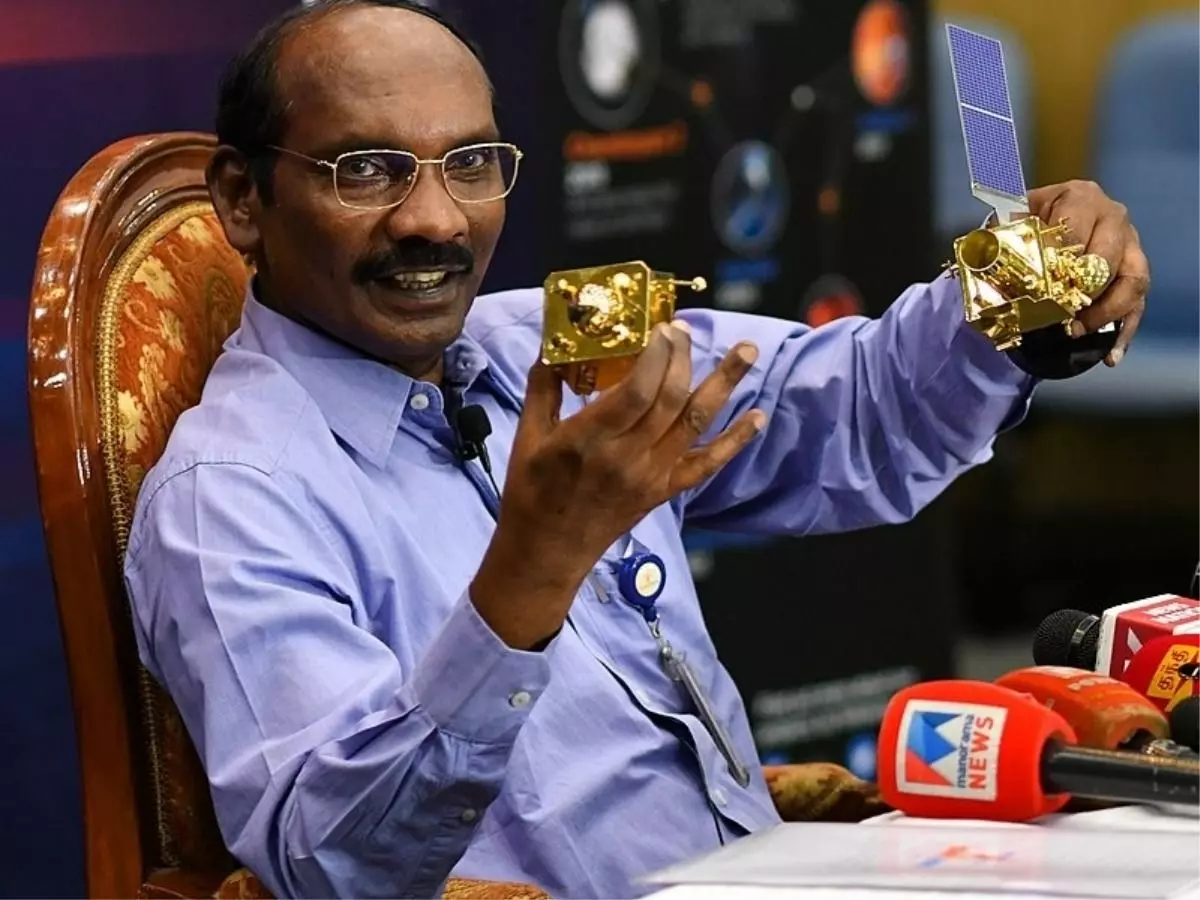Farmer's Son Who Launched Rockets, ISRO Chairman K Sivan Has Made An Entire Nation Proud
Some of you may not have even heard of Kailasavadivoo Sivan before yesterday. But there¡¯s no way you didn¡¯t notice when the ISRO chief broke down into tears on camera, before being hugged in consolation by PM Narendra Modi.

Some of you may not have even heard of Kailasavadivoo Sivan before Chandrayaan-2's descent on the moon's surface. But there's no way you didn't notice when the ISRO chief broke down and was inconsolable before being hugged in consolation by PM Narendra Modi.
But you should know K Sivan a lot better. We all should. His story is inspiring, full of great achievements thus far, and it will fill you with pride and joy.

Images courtesy: ISRO
Sivan wasn't born to greatness, he worked for it
The 62-year-old man behind India's space program was born to a simple farmer in the village of Tarakkanvillai in Tamil Nadu's Kanyakumari district. He went to a local Tamil medium government school, where he showed a brilliance his family thankfully recognized.
According to his uncle, Sivan was the first among his family members to ever graduate, earning his Bachelor's Degree in Mathematics from ST Hindu College in Nagercoil. Eventually, his exceptional ability earned him recognition at MIT. Sivan has previously said his father sold off a quarter of an acre of land in order to send his son to study abroad.
There Sivan graduated with an aeronautical engineering degree, later completing a Masters in aerospace engineering from the Indian Institute of Science (IISC) in 1980. He even went on to earn a doctoral degree in aerospace engineering from Indian Institute of Technology-Bombay in 2006.

A life devoted to furthering India's space ambition
K Sivan eventually joined the Indian Space Research Organisation (ISRO) in 1982. His first assignment was to participate with the team working on the Polar Satellite Launch Vehicle (PSLV) project. Sivan is also credited with his contribution to the development of cryogenic engines for India's rockets, eventually earning him a spot as director of ISRO's Liquid Propulsion Systems Centre in 2014.
Sivan was later promoted to Director of the Vikram Sarabhai Space Centre in 2015. And in 2018, he became the ninth chief of the Indian Space Research Organisation, when he took over from AS Kiran Kumar. In another three years, 2022 will be his 40th year working in the field of aerospace, during which time he's worked on and headed multiple distinguished projects to further India's aerospace prowess.

He's an award-winning scientist
Over the years, Sivan has earned numerous accolades for his contributions to ISRO. In 1999 he was given the Shri Hari Om Ashram Prerit Dr Vikram Sarabhai Research Award. He received the ISRO Merit Award in 2007, the Dr. Biren Roy Space Science Award in 2011, and most recently Tamil Nadu's Dr APJ Abdul Kalam Award in 2019.
Aside from that, K Sivan is also a research fellow of the National Academy of Engineering, the Indian Systems Society for Science and Engineering, the Aeronautical Society of India, and the Systems Society of India. He also published a book in 2015 in his field titled 'Integrated Design for Space Transportation System in 2015'.

Major achievements
We've already mentioned that Sivan was part of the PSLV team, which designed, built, and flew India's workhorse rocket for so many years. He also worked on the GSLV team and served as director of the GSLV MkIII project.
Most recently of course, he was heading the INSAT project, which is attempting to set up India's own geolocation satellite network comparable to GPS. And then there was Chandrayaan-2, which didn't land on the lunar surface as expected.
Despite all the work put in by Sivan and the teams at ISRO, things went wrong. Though the Chandrayaan-2 orbiter is safely up above the Moon, the lander and rover made it 99 percent of the way to the lunar surface before dropping contact with HQ. It's why K Sivan couldn't help but break down on camera.
#WATCH PM Narendra Modi hugged and consoled ISRO Chief K Sivan after he(Sivan) broke down. #Chandrayaan2 pic.twitter.com/R1d0C4LjAh
¡ª ANI (@ANI) 7 September 2019
When you've put years into a massively ambitious project like this, it's hard to see it fall short by a hair's breadth. But this is ISRO we're talking about, so they'll get back up and try to do it again. Perhaps on an even cheaper budget this time.
All we can do is wait and watch, and wish India's self-made 'Rocketman' the very best for his continued service and dedication to the nation.
